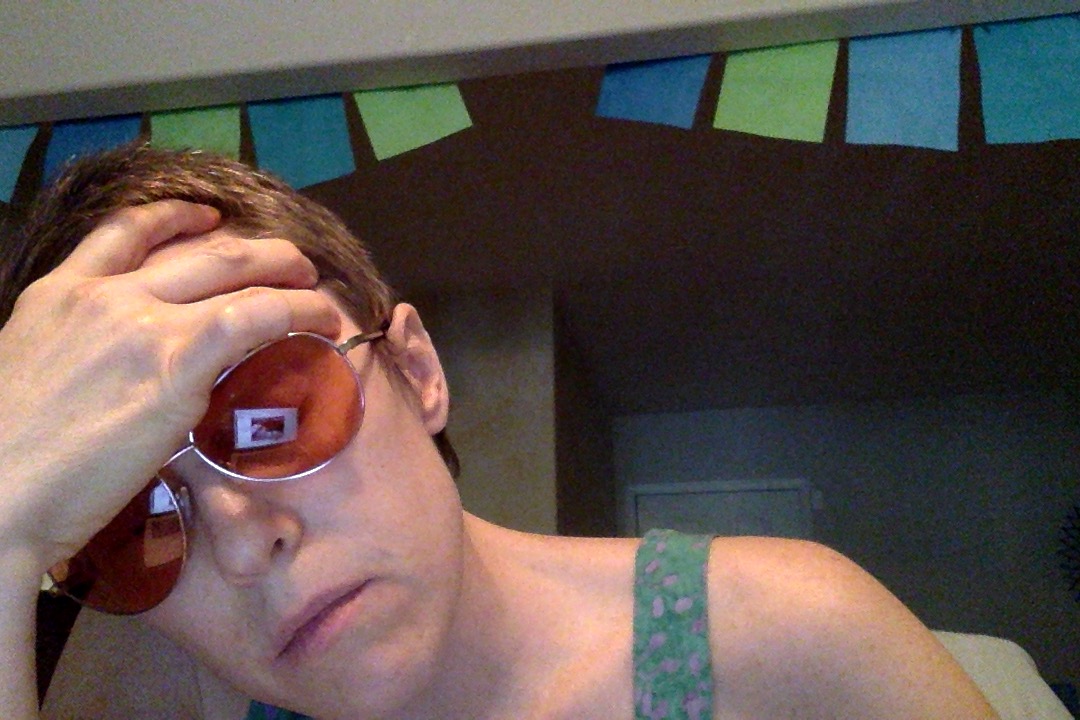
This photo is not a glamorous temporary facelift intended to show off my manicure, despite what Elle magazine might claim. Nope, it’s me trying to get at least a little work done during a migraine attack.
According to Elle, #migrainepose is a trending Instagram pose that’s “damn flattering.” I wish I’d know how beautiful I looked all these years that the pain-induced furrow between my eyebrows has been deepening into a rut.
We at ELLE.com love a weird Instagram pose, and the latest one populating on our feeds is giving everyone a headache. Well, it’s making everyone deliberately look like they have a headache. And it’s damn flattering.
Migraine Pose, coined by makeup artist Nam Vo, involves posing with one or two hands pulling your face up by your temples as if you had a, well, migraine. There’s a reason it’s trending: The pose tightens the face, makes your cheekbones look more prominent, and lifts the brows. It’s a temporary facelift for the ‘gram.
“I love it because the beauty of your hands frame the face and give it more structure. I always make my models pose this way,” Vo told me, “It’s also a great time to show off your manicure.” #Priorities.
My #priorities are reducing the stigma of this disabling disease that can rob people of any semblance of a normal life, teaching those without migraine how that migraine is so much more than “just a headache,” and trying to live as well as possible with a life that’s dictated by a terrible illness. Granted, showing off my beautiful hands and giving my face more structure are probably loftier goals. Perhaps I could have pursued those important priorities if I hadn’t spent most of my adult life disabled by migraine.
Ways to fight back against this blood-boiling migraine stigma:
- Post a photo of yourself during a migraine attack to social media with the hashtags #truemigrainepose and #migrainepose
- Tell Elle what you think of their perpetuation of migraine stigma. Twitter: @ellemagazine, Instagram: @elleusa, Facebook: @ellemagazine. You can also email them at editors@elle.com or contactus@elle.com. **Do not use “migraine” in the subject line! These messages are being returned as undeliverable, while those with blank subject lines go through!**
- Tell Nam Vo, the makeup artist who coined the term, what you think, too. Instagram: @namvo.

